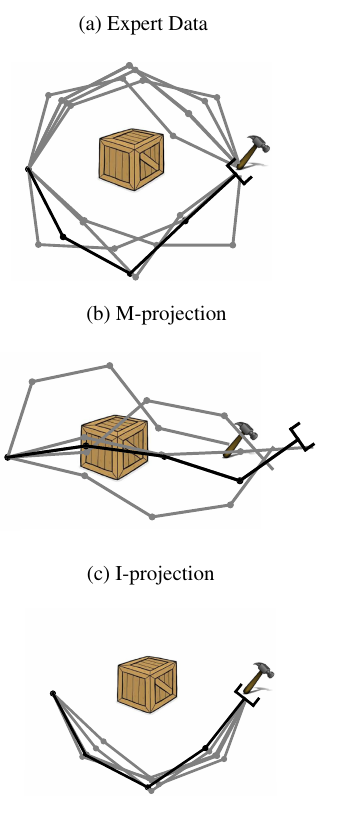
Expected Information Maximization
-
Author:
Philipp Becker, Oleg Arenz, Gerhard Neumann
-
Source:
ICLR 2020 Conference
-
Modelling highly multi-modal data is a challenging problem in machine learning. Most algorithms are based on maximizing the likelihood, which corresponds to the M(oment)-projection of the data distribution to the model distribution. The M-projection forces the model to average over modes it cannot represent. In contrast, the I(nformation)-projection ignores such modes in the data and concentrates on the modes the model can represent. Such behavior is appealing whenever we deal with highly multi-modal data where modelling single modes correctly is more important than covering all the modes. Despite this advantage, the I-projection is rarely used in practice due to the lack of algorithms that can efficiently optimize it based on data. In this work, we present a new algorithm called Expected Information Maximization (EIM) for computing the I-projection solely based on samples for general latent variable models, where we focus on Gaussian mixtures models and Gaussian mixtures of experts. Our approach applies a variational upper bound to the I-projection objective which decomposes the original objective into single
objectives for each mixture component as well as for the coefficients, allowing an efficient optimization. Similar to GANs, our approach employs discriminators but uses a more stable optimization procedure, using a tight upper bound. We show that our algorithm is much more effective in computing the I-projection than recent GAN approaches and we illustrate the effectiveness of our approach for modelling multi-modal behavior on two pedestrian and traffic prediction datasets.Source Code: TBD
